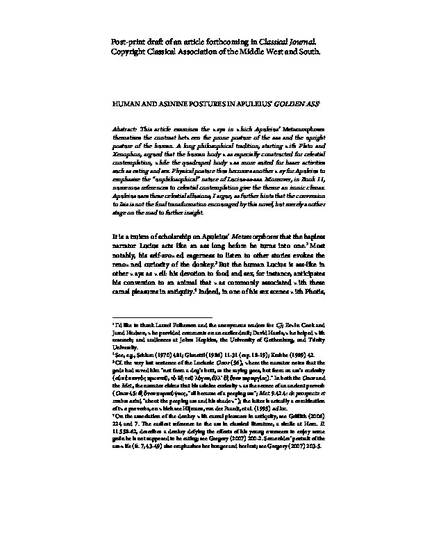
This article examines the ways in which Apuleius’ Metamorphoses thematizes the contrast between the prone posture of the ass and the upright posture of the human. A long philosophical tradition, starting with Plato and Xenophon, argued that the human body was especially constructed for celestial contemplation, while the quadruped body was more suited for baser activities such as eating and sex. Physical posture thus becomes another way for Apuleius to emphasize the “unphilosophical” nature of Lucius-as-ass. Moreover, in Book 11, numerous references to celestial contemplation give the theme an ironic climax. Apuleius uses these celestial allusions, I argue, as further hints that the conversion to Isis is not the final transformation encouraged by this novel, but merely another stage on the road to further insight.
